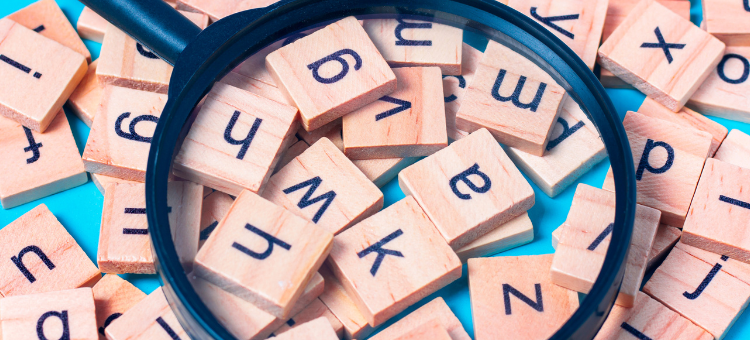Then vs. Than – Which one to use when? Know the differences!

Introduction
In the English language, some words can puzzle even those who speak it every day, like “fewer vs. less” or “infer vs. imply.” Another tricky pair is “then” and “than.” Let’s break it down in simple terms.
When we talk about “then,” think about it like a time word. It’s used to show what happens next or at a specific time. On the other hand, “than” is used when comparing things, like saying something is bigger than something else.
So, “then” is like a time buddy, and “than” is your comparison friend. Remember this, and you’ll avoid the mix-up! Now, let’s explore these words in everyday sentences to make it even clearer.
What Are the Most Commonly Confused Words?
Among many researchers in the English language, the distinction between “then” and “than” can be a source of confusion for both native and non-native speakers. While “then” is typically used to indicate time or sequence, serving as an adverb, “than” is a conjunction used in making comparisons. The similarity in pronunciation adds to the challenge, especially when both words are involved in expressing relationships or differences. However, grammatically:
“Then,” as an adverb in a sentence, denotes a specific time or follows a sequence of events.
“Than,” as a conjunction, is employed to draw comparisons between elements in a sentence.
This distinction becomes crucial for effective communication, as the misuse of “then” and “than” can lead to confusion and misinterpretation.
Related Posts: When to Use “e.g.” and “i.e.” While Writing Your Paper
Better Vs. Best: Using Comparatives and Superlatives Correctly
Differences Between ‘THEN’ and ‘THAN’ with Examples
Use of Then in Grammar:
“Then” is an adverb that refers to a particular point in time, a sequence of events, or a consequence.
Usage Examples:
-
Temporal Sequence
Example: “We’ll have lunch, and then we can go for a walk.”
Explanation: In this sentence, “then” is used to indicate the sequential order of actions. First, there is lunch, and after that, the plan is to go for a walk.
-
Consequence
Example: “If you study consistently, then you will perform well in the exams.”
Explanation: Here, “then” is used to express a cause-and-effect relationship. If the condition of consistent studying is met, the consequence is expected to be good performance in exams.
-
At That Time
Example: “I was a student back then, and life was simpler.”
Explanation: In this case, “then” refers to a specific time in the past, providing context to the speaker’s life as a student.
-
In Addition
Example: “She completed her work, and then she helped her colleague with theirs.”
Explanation: “Then” is used to signal an additional action that follows the completion of the first task.
-
Therefore or Consequently
Example: “If it’s raining, then we should bring umbrellas.”
Explanation: In this instance, “then” is used to convey a logical consequence. If the condition of rain is met, the logical response is to bring umbrellas.
Use of Than in Grammar:
“Than” is a conjunction used to introduce a comparison between two things, indicating a difference in degree or preference.
Usage Examples
-
Comparing Differences in Degree:
Example: “Her apartment is larger than mine.”
Explanation: In this sentence, “than” is used to compare the sizes of two apartments, indicating that hers is larger in degree or extent than mine.
-
Expressing Preference
Example: “I would rather go for a walk than watch television.”
Explanation: Here, “than” is employed to express a preference between going for a walk and watching television. The speaker favors the former over the latter.
-
Comparing Quantities or Degree
Example: “The second task is more challenging than the first.”
Explanation: In this case, “than” is used to compare the level of difficulty between the second task and the first, indicating a difference in degree.
-
Comparing Actions or States
Example: “He would rather apologize than continue the argument.”
Explanation: “Than” is used to compare the action of apologizing with the action of continuing the argument, expressing a preference for the former.
-
Comparing Characteristics
Example: “The new model is more efficient than the old one.”
Explanation: In this sentence, “than” is used to compare the efficiency of the new model with that of the old model, indicating a difference in characteristics.
Related Post: 6 Tricks to Identify Affect vs. Effect with Examples
6 Tips to help you distinguish between ‘then’ and ‘than’
Identifying mistakes between “then” and “than” can be challenging, but here are some tips to help you distinguish between the two:
-
Understand the Meanings
“Then” is often used to indicate a time sequence or consequence. It can be associated with time, like “First, complete your homework, and then you can go play outside.”
“Than” is used in comparisons. You can think of it as introducing the second part of a comparison, such as “She is taller than her brother.”
-
Check for Context
Consider the context of the sentence. If you’re expressing a sequence of events or consequences, then “then” is likely the correct choice. If you’re making a comparison, choose “than.”
-
Use of Comparative Words
If you find words like “more,” “less,” “better,” or “worse” in the sentence, it’s a clue that a comparison is being made, and “than” is the correct choice.
Remember the ‘A’ in “Than”: A helpful trick is to associate “than” with comparisons because both words contain the letter ‘a.’ This mnemonic can serve as a quick mental check when deciding which word to use.
Related Post: How to Avoid Common Grammar Mistakes in Academic Writing
-
Proofread Carefully
During proofreading, pay close attention to the specific meaning you intend to convey in the sentence. Careful review can help you spot errors in the use of “then” and “than.”
-
Use Grammar Checkers
Use grammar-checking tools in writing applications or word processors. These tools can often catch usage errors and provide suggestions for corrections.
-
Do More Practice
Regularly practice using “then” and “than” in sentences. The more familiar you become with their correct usage, the easier it will be to identify and correct mistakes.
Top 7 Grammar Checker Tools to Identify and Fix Mistakes
- Grammarly: It is a widely used grammar and writing enhancement tool. It checks for grammatical errors, spelling mistakes, and punctuation issues and offers suggestions for improving writing style. It offers both free and premium plans.
- Grammar Corrector Tool: This free online tool is designed to correct grammar errors in written content. It likely focuses on identifying and rectifying grammatical mistakes such as subject-verb agreement issues, misused words, and punctuation errors.
- SiderAI Grammar Checker: It is positioned as a tool to enhance grammar and writing quality. It likely provides suggestions and corrections for grammar, spelling, and punctuation errors. The specific features may vary.
- Study Crumb: It is used to identify and fix grammar issues in AI written content. It may offer suggestions for sentence structure, grammar rules, and overall writing improvement
- AI Grammar Checking Tool: This free online tool is likely designed to check and correct grammar errors in text. It may provide suggestions for rewriting sentences to improve clarity and coherence.
- Plagy Grammar Checker: It is likely designed to identify and correct grammatical errors in text. It may also include features related to plagiarism detection.
- Enago AI Grammar Checker: It focuses on improving grammar and writing quality. It may provide suggestions for correcting common grammatical errors and enhancing the overall writing style.
Wrapping Up
In short, “then” is for time or sequence, like “next,” and “than” is for comparisons, indicating a difference. Remember, if you see words like “more” or “less,” use “than.” Practice and grammar-check tools can help avoid mix-ups between these words.
Frequently Asked Questions
1. What does “then” mean in grammar?
“Then” is an adverb used to indicate time, sequence, or consequence. It often shows what happens next or at a specific time.
2. When should I use “than” in a sentence?
“Than” is a conjunction used for making comparisons between two things. It signifies a difference in degree, preference, or characteristics.
3. How can I avoid confusing “then” and “than” in my writing?
Remember that “then” is related to time or sequence, while “than” is for comparisons. Look for clues like “more” or “less” in a sentence to signal a comparison, and utilize grammar-checking tools for accuracy.









